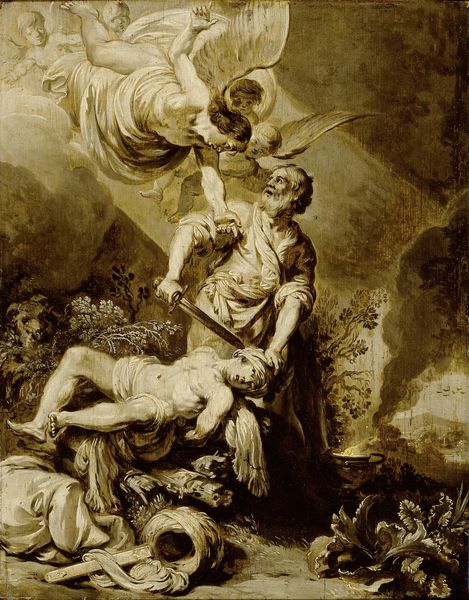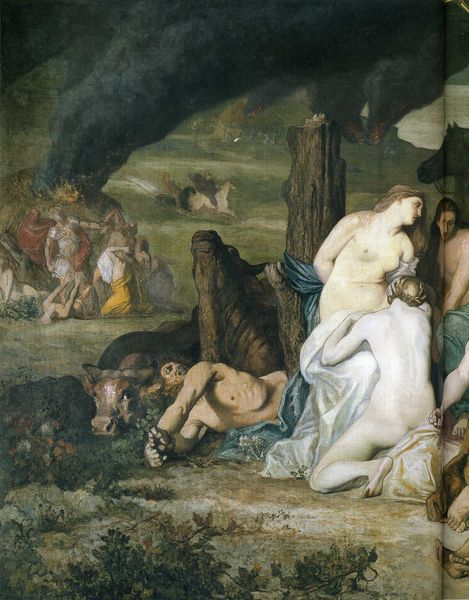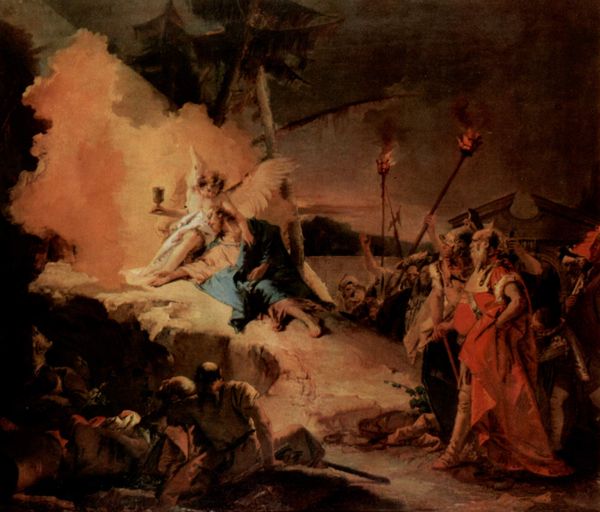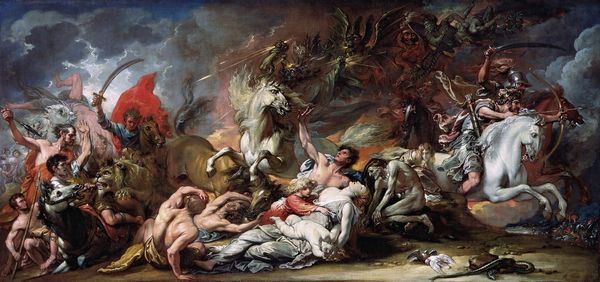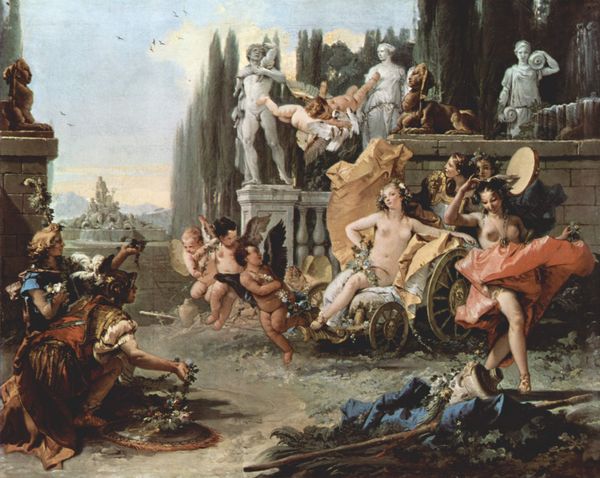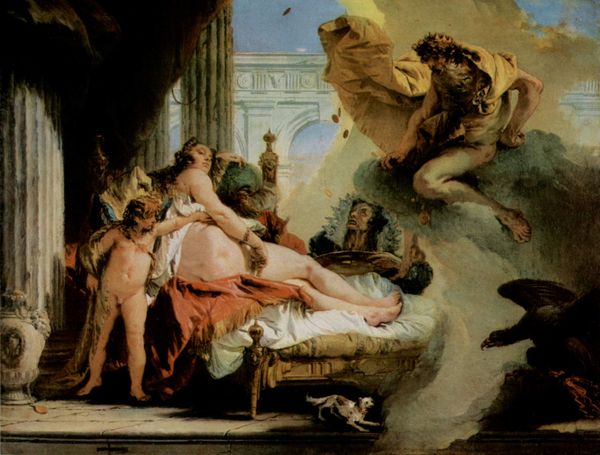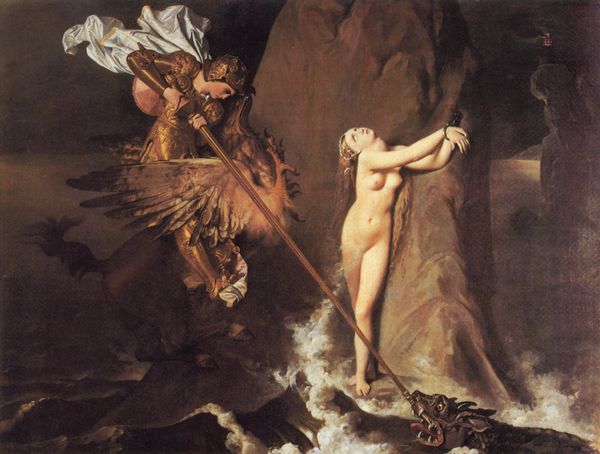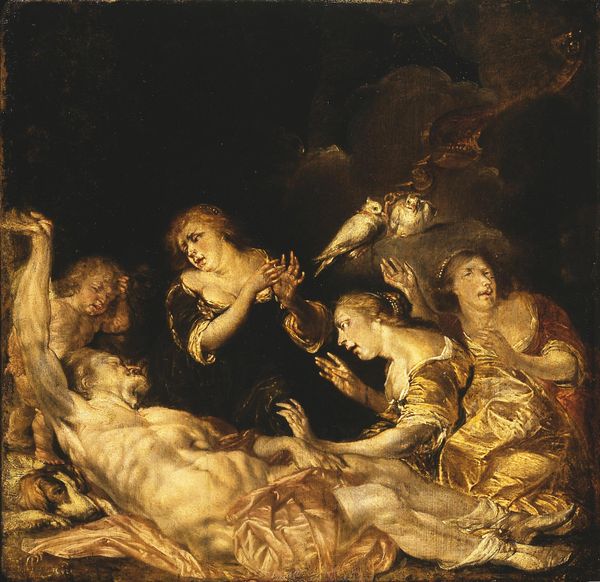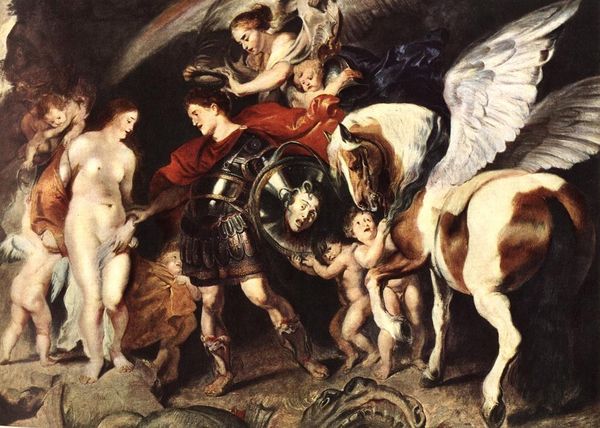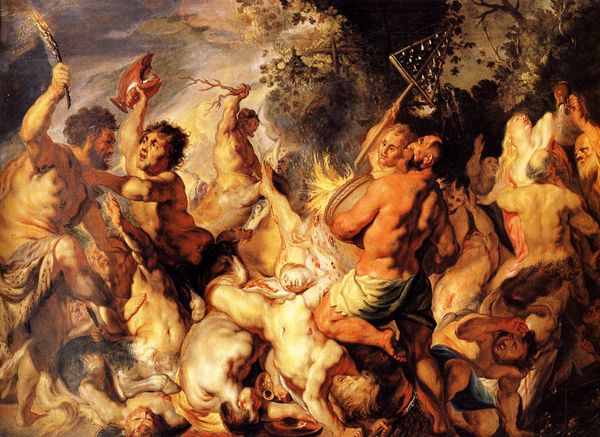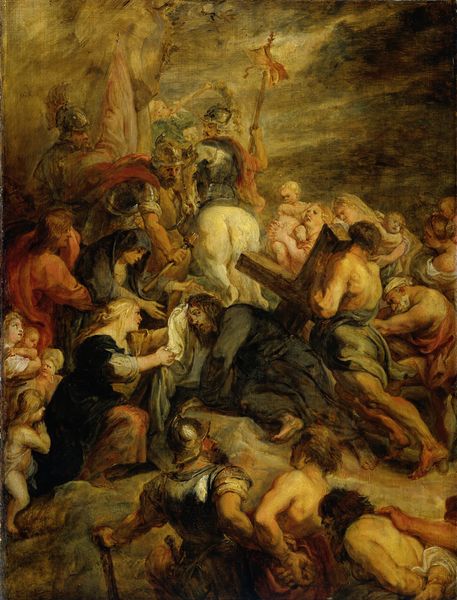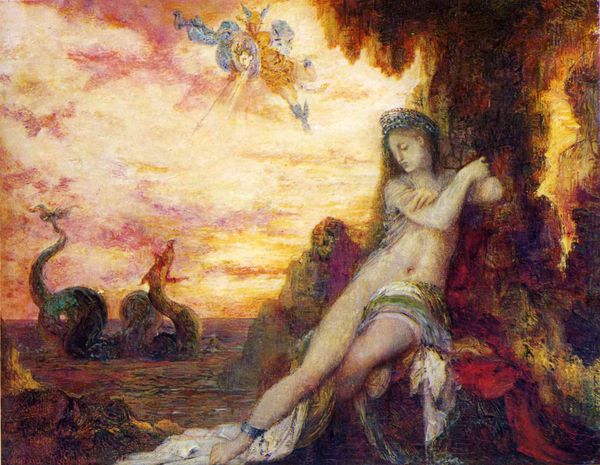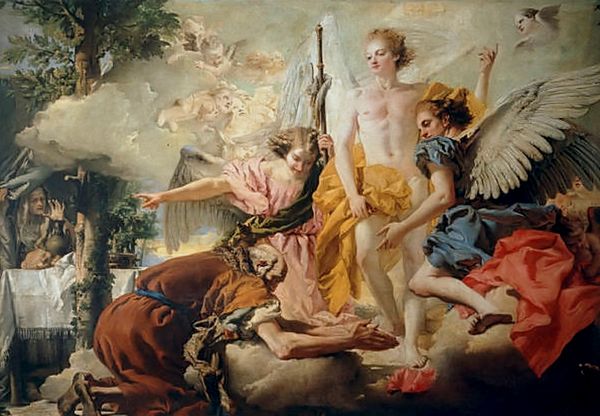
Copyright: Public domain
Curator: Gustave Moreau created this watercolor painting in 1866, entitled “Diomedes Devoured by his Horses.” Editor: The colors evoke an antique world crumbling into chaos, the composition is almost violently fragmented—what a morbidly fascinating piece. Curator: The visual fragmentation surely mirrors the brutality of the mythological event it depicts. Moreau translated the Greek myth, in which Heracles feeds Diomedes, King of Thrace, to his own man-eating horses. Editor: It is rendered with a painterly fluidity, particularly in the blurring of forms. You notice the almost ethereal glow of the human figure, stark against the ravenous energy of the animals? How would you interpret this dramatic light? Curator: Semiotically speaking, the luminance may signify Diomedes’ imminent transformation from mortal king to mythic object—a cautionary figure. Moreau consistently utilized light to emphasize moral lessons in a heightened, almost operatic fashion. Editor: That sounds right. And given the time when Moreau created it, do you think it's a symbolic treatment of power? Perhaps reflecting anxieties around imperial decadence? I'm also struck by the setting. Ruins convey a sense of grand civilizations collapsed. Curator: Definitely. The crumbling architectural forms amplify that sense of lost grandeur. These formal structures provide a counterpoint to the raw animalistic energy. Moreover, they could represent the fall of empires from the vantage of the Second Empire in France. Editor: I see, I am left contemplating how artistic approaches evolve through time as socio-political perspectives shift, particularly regarding themes like authority. Curator: Indeed, considering the Romantic context of Moreau's oeuvre helps interpret these symbolic meanings in historical accounts. Editor: This makes me appreciate how "Diomedes Devoured by his Horses" is visually rich and deeply embedded in the tumultuous socio-political climate of its time. Curator: Likewise, I now view the color contrast not just as an aesthetic element but as an indicator of the inherent tensions and ultimate fragility present in all forms of governance.
Comments
No comments
Be the first to comment and join the conversation on the ultimate creative platform.

